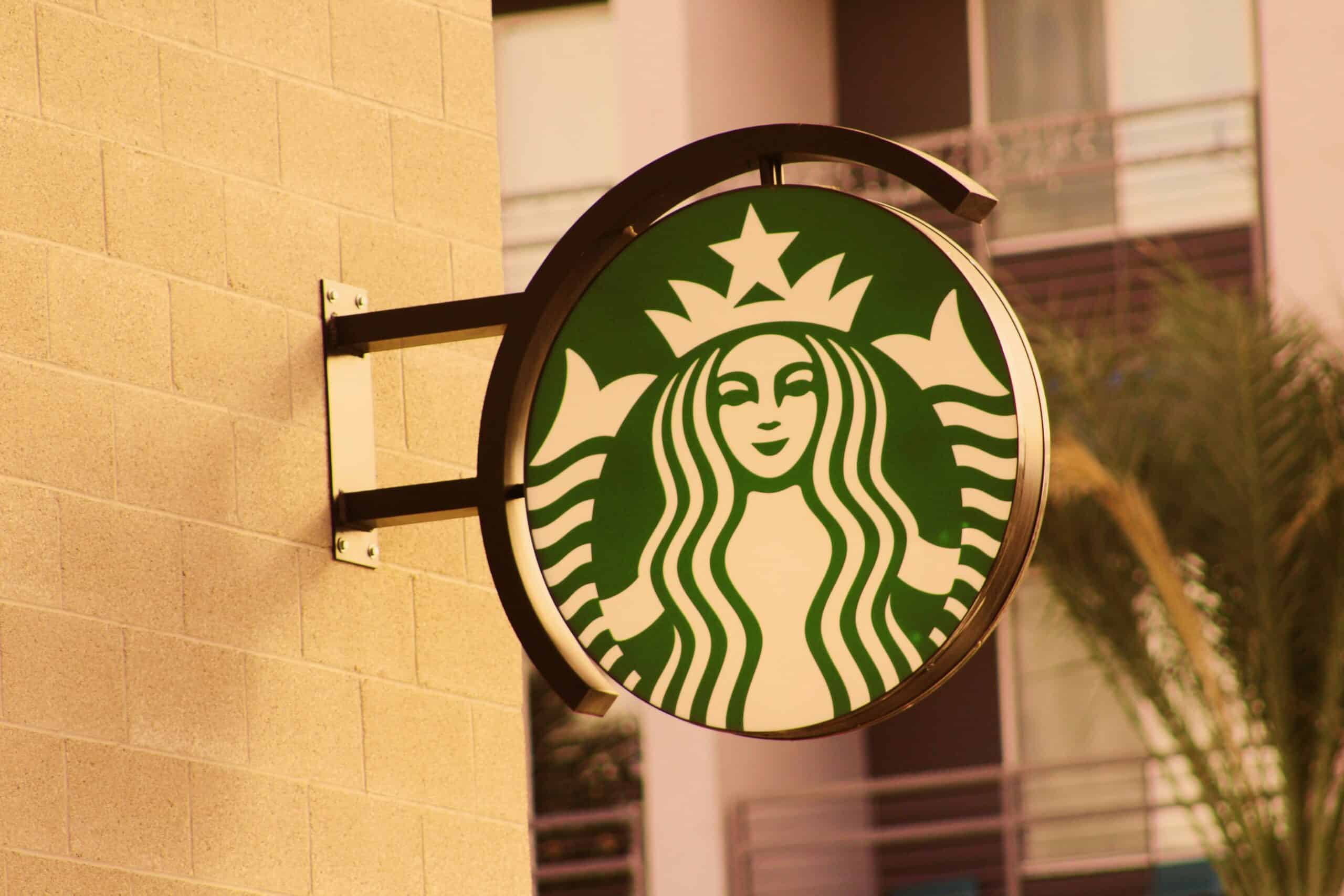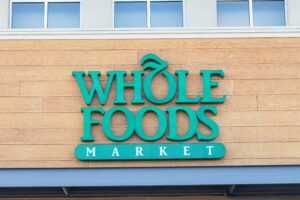
Photo by Athar Khan on Unsplash
June 13, 2024
Will Starbucks’ Pairings Menu Draw in Price-Conscious Consumers?
Starbucks is introducing a new “pairings menu” to make breakfast more affordable and attract more customers.
This limited-time offer allows customers to pair a tall hot or iced tea or coffee with popular breakfast items for $5 to $6. The options include either a butter croissant or a breakfast sandwich, with further choices currently restricted. The offer is available only at participating stores, doesn’t allow for substitutions, and excludes delivery, Starbucks Reserve coffees, and ready-to-drink beverages. Customizations may incur extra costs, and the price increases to $7 for specific sandwiches, according to Starbucks. Taxes apply, and the deal can’t be combined with other discounts.
This new deal comes in response to rising food costs and inflation, which have been impacting both businesses and consumers alike. Starbucks’ recent financial performance has been underwhelming, with the company reporting a 2% decline in net revenue to $8.6 billion for the latest quarter. Global comparable store sales also fell by 4%, and North American sales, one of Starbucks’ largest markets, dropped by 3%.
CEO Laxman Narasimhan acknowledged the disappointing results, attributing it to a challenging operating environment that includes economic headwinds, consumer demand fluctuations in the U.S. and China, and additional pressures from boycotts, barista unionizations, and public criticism from its former CEO.
Traditionally, Starbucks has focused on enhancing its product lines with seasonal offerings rather than meal bundles. Each season brings new flavors and beverages to Starbucks’ menu, such as the olive oil-infused “Oleato” coffee introduced in January, lavender-flavored lattes in March, and spicy cold foams and lemonades in April. This summer, Starbucks added a new drink featuring raspberry pearls and a coconut milk base inspired by bubble tea.
In the face of its challenges, Starbucks is adopting a bundling strategy similar to those used by other fast-food giants, which have pivoted to value deals due to declining customer visits and spending, particularly among low-income consumers. Fast-food chains like McDonald’s, Wendy’s, and Burger King have recently reintroduced low-cost meal deals to attract budget-conscious customers. McDonald’s announced a $5 meal deal in May, which will start June 25 and last for a month, followed by Wendy’s $3 breakfast deal and Burger King’s announcement of its own $5 bargain deal.
Franchisees, while welcoming the potential for increased customer traffic, voice concerns over the profitability of these value meals amidst rising costs. They emphasize the importance of upselling and promoting supplementary products to offset the narrow profit margins of the discounted items. For instance, McDonald’s franchise owners underscore the holistic value proposition, including service quality and overall customer experience, to enhance competitiveness despite the financial challenges posed by the value menus.
According to one franchise owner, Nick Snowberger, who owns 16 McDonald’s restaurants in Wyoming and Montana, the value meals are essentially a “break-even proposition when it comes to profit,” but they’re good for the customer. “This is an opportunity to do business at a cost to our customers that is as competitive and incentivizing as we have had in a long time,” he explained.
Corporate and franchisee dynamics play a critical role in navigating these economic pressures. Franchise owners like Scott Rodrick, who owns 18 McDonald’s locations in Northern California, advocate for aggressive market share strategies despite substantial operational costs, including California’s $20 minimum wage and escalating insurance expenses. Their focus on growing market share reflects a broader industry trend of adapting to declining foot traffic and reduced consumer spending by offering attractive pricing structures.
Though not a franchise, Starbucks’ broader changes this summer include a new iced coffee blend, updates to its app for more accurate ordering times, and new promotions. The need for deals to drive traffic highlights concerns over the affordability of Starbucks, which is traditionally seen as a symbol of affordable indulgence.
Additionally, Starbucks is adjusting its partnership with Delta Air Lines’ SkyMiles program. As of June 12, customers now earn miles only on Starbucks account reloads of $25 or more, rather than per dollar spent, indicating a shift toward encouraging higher spending.
Discussion Questions
What strategic considerations should Starbucks prioritize in balancing profitability with consumer affordability, especially amidst rising food costs and competitive pressure from fast-food chains?
How might this initiative impact customer perceptions of the brand’s premium positioning and overall brand equity over the long term?
Poll
BrainTrust
Richard Hernandez
Merchant Director
Allison McCabe
Director Retail Technology, enVista
David Biernbaum
Founder & President, David Biernbaum & Associates LLC
Recent Discussions








Given the current sales pressure and the fact almost everyone in the foodservice space is pivoting to value, I think Starbucks has little choice but to join in. The pairings are a good way of enticing people to come during the important breakfast daypart, but they’re only going to be helpful to those who want something to eat. I also don’t think it solves for those who simply want to save cash by ditching their daily Starbucks habit. So if his is helpful, but it won’t completely reset value perceptions.
This price point makes Starbucks accessible to more consumers, which could help the chain capture a greater share of the all-important morning traffic.
Standardizing these menu items will help Starbucks make the store experience more efficient.
Even if Starbucks doesn’t significantly raise sales or store visit increases with the new pairing menu, this begins to build a perception that deals can be had, and creates greater approachability to what feels like an expensive indulgence.
A key question over time is, will this springboard sales in more profitable drink and food menu items while also improving the third place experience? Building brand along with performance should be the goal.
Starbucks needs to pay closer attention to Howard Schultz’s criticisms, and believe him when he says the company needs to refocus on coffee.
Rather than bundles, bargains, and discounts, Schultz suggested the company’s leaders spend more time in stores and focus on coffee drinks. It’s not the data that holds the key, but the stores, as he says all the time.
Starbucks’ down periods under Schultz were always solved by shifting his focus back to the core.
Bundles aren’t the “core.”
Customers will be aggravated by the bundle deals since reserve coffees and ready-to-drink beverages are excluded. Instead of bundles, Starbucks should focus on seasonal offerings again.
The current management seems to be following the trends of other fast food chains, which suggests they do not understand their own marketing strategy as well as Howard Schultz. Db
I agree, its so important to stay focused on the core!
What more to say? SBX is not McDs and should not want to be. If affordability is the problem, keep it simple. Cut the price.
100% agree with this. From the people that I know, it’s not about the bundles (most think it should be a bigger size drink to see the value) it is about the core pricing. Trends are good to acknowledge but customer base is about the price and the service. I wish they would focus on that.
I agree, David. You have to analyze what has been making people spend less at Starbucks and/or visit the chain less. Price certainly has something to do with this. However, there are a whole basket of other factors including quality of the experience, the wait times for drinks, cafes becoming less welcoming, and so forth. A meal deal does not remedy all of those things. They’re addressing something like 25% of the problem with a solution that doesn’t address the cost concerns head on.
I definitely agree with this. Consumers are used to ibetter quality coffee from indie brands. Starbucks for some has become the “only when I don’t have a choice” option. Given the shrinkflation of their cup sizes coupled with higher prices, it’s hard to see value bundling as anything other than an acceptance that they are no longer a premium destination.
I think it’s a smart merchandising idea. But I hate it when companies try to connect every little (smart) thing they do to over-riding societal issues. Shareholders may want to desperately hear those types of big ideas, but what impresses me most is that it’s simply a smart way to do business.
Good for Starbucks!
If the consumer has to think too hard to select their pairing – complicated combinations and exceptions – it may be more of an aggravation than a value. Keep it simple…
Allison, that is exactly what I thought as I read the discussion. Drive-up, online, or at the counter, the regular customers step up and make their daily orders. Are they really interested in the complications of not just the bundle but adding this or that to the bundle?
Gene, you know my vote on that question!
A butter croissant and a tall coffee at Starbucks isn’t much more than $5 now, but if Starbucks is looking to build a value perception with its pairings menu this will help. “Pairings menu” sounds fancy.
Still, this deal pales in comparison to McDonald’s and Burger King’s $5 meal deals, and there are so many exclusions. It does represent a savings for those who enjoy a basic drink and bakery item, but that isn’t why we go to Starbucks, is it?
The food offer at Starbucks remains poor, in my opinion. Most people go there for drinks and that’s it. For those folks the offer of a cut-price croissant or sandwich isn’t going to move the dial!
Dave Biernbaum and Allison McCabe said it all.
If SBX has an affordability problem, bundles won’t solve it. Focus on why you were successful and double down on that. What will be next? Kid’s Meals?
Well they do offer free puppuccinos for dogs!
Starbucks needs to better balance value-based offerings for their price conscious consumers. This is an absolute must for Starbucks to remain competitive and sustain their market share if they want to see positive future growth.
This is a super smart move. Given consumers’ recent tendency towards spending to save, creating value-focused offerings will resonate.
Pair the stuff that is not selling well with other stuff that is not selling well, discount it and hopefully watch the stuff no one wants to pay top $ for leave the store! The art here is what to pair, and if SB’s gets that right this initiative is a winner.
Yes, coffee focused drinks are the core, and they should continue to focus on this. However, Starbucks can potentially create a risk of alleviating more customers and be considered out of touch for some customers if they only focus on the core and new exotic, innovative prices that drive higher prices.
While we tend to gravitate to the product line. It may be good to step back on understanding where they have lost from a daypart and even on an occasion perspective. Certain evenings of the week could offer up a bundle ($1 off two desserts-date night) without really eroding their brand. It’s time to not only think about the products but also consider how to regain customer trips, occasions and prioritize driving incremental trips.